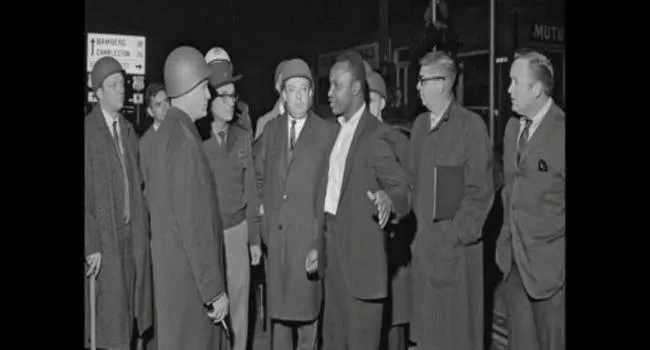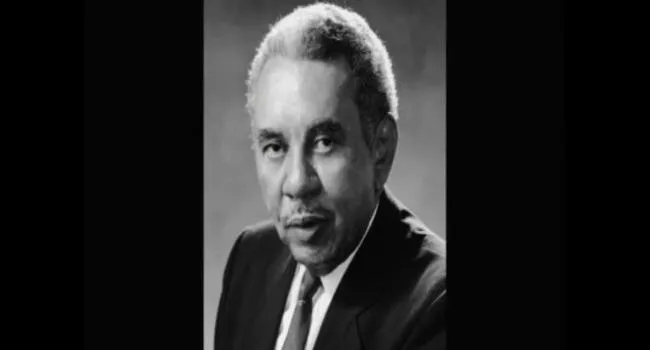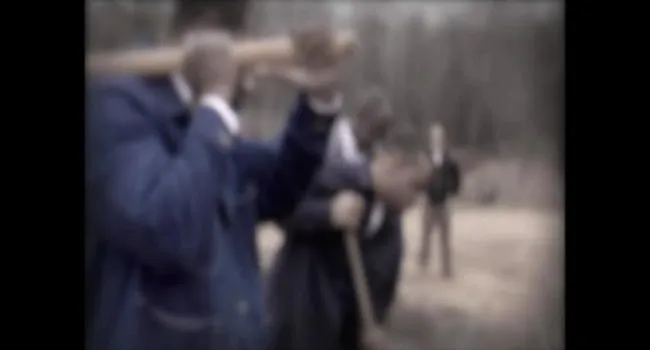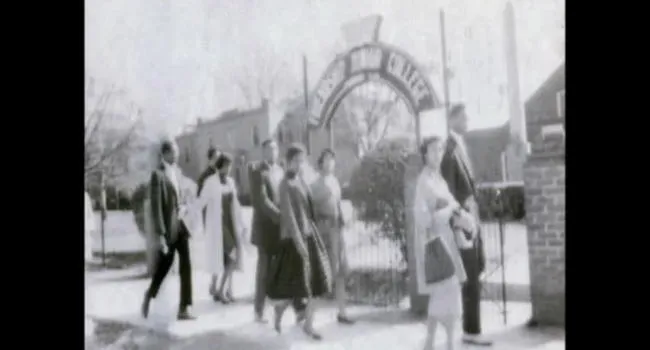00:00
(narrator)
If Rock Hill was a war zone,
00:03
the most pivotal battle
was February 12, 1960.
00:06
For months
leading up to that day,
00:09
local churches, students,
and members of the NAACP
00:13
planned
a lunch counter sit-in
00:15
to take place
at Woolworth's, McCrory's,
00:19
and two nearby drugstores
in downtown Rock Hill.
00:23
As the clock
struck 11 a.m.,
00:26
over 100 blacks
filled the lunch counters
00:29
and demanded
to be served.
00:31
Angry white mobs
protested in the streets,
00:34
and police struggled
to maintain the peace.
00:38
Instead of
serving the blacks,
00:40
the lunch counters
chose to shut down,
00:43
deny service
to everyone,
00:45
and remove
their stools.
00:47
Forcing
the five-and-dime stores
00:49
to temporarily close
their counters
00:51
gave blacks
a small taste of victory
00:54
and momentum
toward the ultimate goal:
00:59
Leading
the Rock Hill movement
01:01
was a minister
named Reverend Cecil Ivory.
01:04
Ivory was young,
ambitious, well-educated,
01:07
and intent
on using nonviolent tactics
01:10
to defeat segregation.
01:12
(male speaker)
The idea that Cecil Ivory
01:15
was a Martin Luther King
for Rock Hill is valid.
01:19
He was at the forefront
of organizing
01:22
the African-American community
in Rock Hill.
01:25
(narrator)
Reverend Cecil Ivory
01:27
arrived
in Rock Hill in 1948
01:29
with his wife
and three young children
01:33
to accept
an invitation
01:35
to pastor
Hermon Presbyterian Church.
01:37
Early on, Reverend Ivory showed
his commitment to civil rights.
01:42
He joined the Committee for
the Promotion of Human Rights
01:48
where he would also serve
as president until his death.
01:51
As a freedom fighter,
01:54
Reverend Ivory won
his first major victory in 1956.
01:57
After a woman was denied a seat
on the Rock Hill city bus,
02:02
he masterminded
a boycott
02:04
that eventually drove
the bus company out of business.
02:08
Yet Reverend Ivory's
lasting legacy
02:10
was his commitment
to counseling and supporting
02:12
the young freedom fighters
in Rock Hill,
02:15
mainly Friendship College
students.
02:18
At the very start
of the sit-in movement,
02:21
young men and women
of Friendship Junior College
02:24
began picketing
and demonstrating.
02:26
Reverend Ivory
was their strength,
02:28
counseling them and teaching
them nonviolent tactics.
02:32
(Workman)
The black community
rallied around him
02:35
because they knew
the person he was.
02:37
When you have
a fighter,
02:39
you rally
around that person,
02:41
and Reverend Ivory
was that type of fighter.
02:44
(narrator)
For Reverend Ivory,
02:46
the Friendship students
were his foot soldiers.
02:49
They were young, energetic,
and, unlike most adults,
02:52
didn't face the threat
of losing their jobs
02:55
by joining
the movement.
02:57
(male speaker)
There are social, psychological,
and economic reasons
03:01
that can explain
why so many adults
03:04
chose not to participate
in the movement,
03:06
even those who were interested
in working to change things.
03:10
You could be ostracized
from business.
03:13
People would cut off
your credit.
03:15
You could be evicted
from your home.
03:18
Your family
could be made to suffer
03:20
because of your personal
and political perspectives.
03:23
Young people did not have some
of those same vulnerabilities
03:27
and also had
what we might describe
03:30
as the impatience
that sometimes comes with youth.
03:33
They didn't look
at the situation
03:35
and think,
We can't do this.
03:37
They looked at the situation
and said,
03:39
Why not us,
and why not now?





